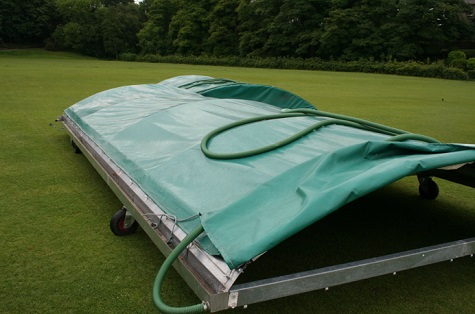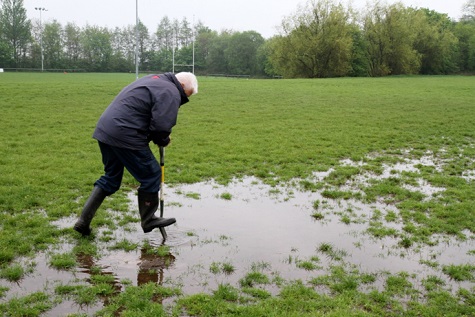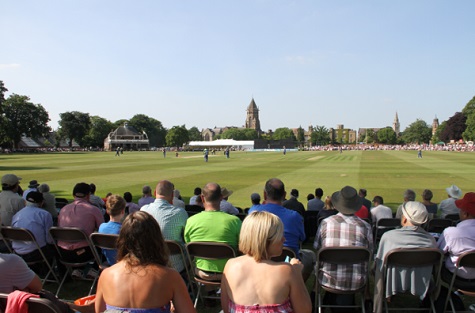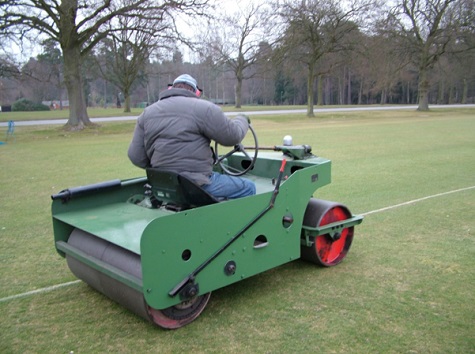I read with interest recently, several concerned cricket club grounds staff are asking if the cricket leagues can recognise the difficulties they are facing trying to get their grounds ready for the start of this year’s cricket season – principally due to the to the relentless rain fall we have been having this season.
We have experienced well over 800mm of rain since November in most parts of the country, with February being one of the wettest months ever recorded.
The saturated ground conditions during the last eight weeks has meant that turf professionals are struggling to get on their squares to prepare pitches for the forthcoming schedules.
There has been little or no preseason rolling carried out to date and with many fixtures due to start, there will be plenty of games postponed this month.
It will be interesting to see how this effects clubs at all levels of the game and what support, if any, the clubs will receive. The loss of income for many grassroots clubs could have dire consequences in the long term.

Not only that, the issue of finding time to reschedule fixtures during an ever-increasing fixture list will put extra pressure on the grounds staff and resources as well as incurring further costs for the club. I believe one of the county clubs have already cancelled some of their early fixtures to give the grounds staff more time to prepare the pitches, knowing that they need to wait for the weather to improve to help prepare safe and consistent playing surfaces.

Worcestershire, are already scheduled to play their first two games away from home because of their ongoing flood threat and are now forced to stage their opening two home matches at Kidderminster.
There may be calls to extend the playing season, which now often creeps well into October, again bringing another set of problems – namely, contractors and grounds staff cannot get on with the end of season renovation in the ideal weather window of September. Once you get into the depths of October, ground and air temperatures will have decreased into to single figures thus slowing down germination rates.
Also, this current bout of wet weather will have affected both football and rugby pitches. Playing on saturated pitches will inevitably cause damage and in some cases, fixtures will be postponed and need to be replayed - meaning schedules may extend well into May / June, which will then impinge on any planned and programmed end of season renovations.

Many sport turf contractors may find themselves having to cope with trying to rearrange work and may even find themselves not able to complete the work until much later than planned. Which again may have a knock-on effect on the growing in time and preparations for the new playing season that generally starts in August.
Funding
While on the subject of cricket, I also read in The Telegraph that the ECB have announced that the government has pledged £35 million of investment over the next five years into grass roots and state school cricket.
The article says that funding will see 16 state-of-the-art all-weather cricket domes built outdoors within cities across England that will host games at two T20 World Cups held in England: a women’s edition in 2026 and men’s edition in 2030.

The domes will be built within culturally diverse communities where “figures have indicated low levels of physical activity”. This follows the launch last year of the first of these domes, in Bradford.
Three cricket charities - Chance to Shine, the Lord’s Taverners, and the ACE (Afro-Caribbean Engagement) Programme - will share a £14 million funding boost in a bid to help the game reach more state schools, where the game has withered in recent years.
Let’s hope this money delivers the outcomes the ECB want to see achieved in getting more players into the game. However, for me, we also need to see greater investment for the maintenance and management of these community clubs. There needs to be good incentives for people to take up the responsibility of maintaining these grounds. This can only be achieved by providing the essential equipment, machinery and training for those people willing and interested in taking on the role of maintaining the ground.

Like other sports’ grassroots community sports clubs, having a grounds team or person who look after these facilities is an essential asset. Without these dedicated people we would have no sport.
It is important that club committees start recognising the work of these valuable club members and ensure they have the appropriate budgets and resources to deliver the expectations of the club.
For many clubs the equipment in the shed is often old and not fit for purpose. We now have a plethora of specialist turf management equipment that is more efficient and safer to use. There are currently several grants and loans available to tap into to get this essential equipment.
The GMA working with the national sporting bodies now have a set of pitch advisors covering cricket, rugby union, rugby league and football who can advise and point you into the right direction to improve your facilities.